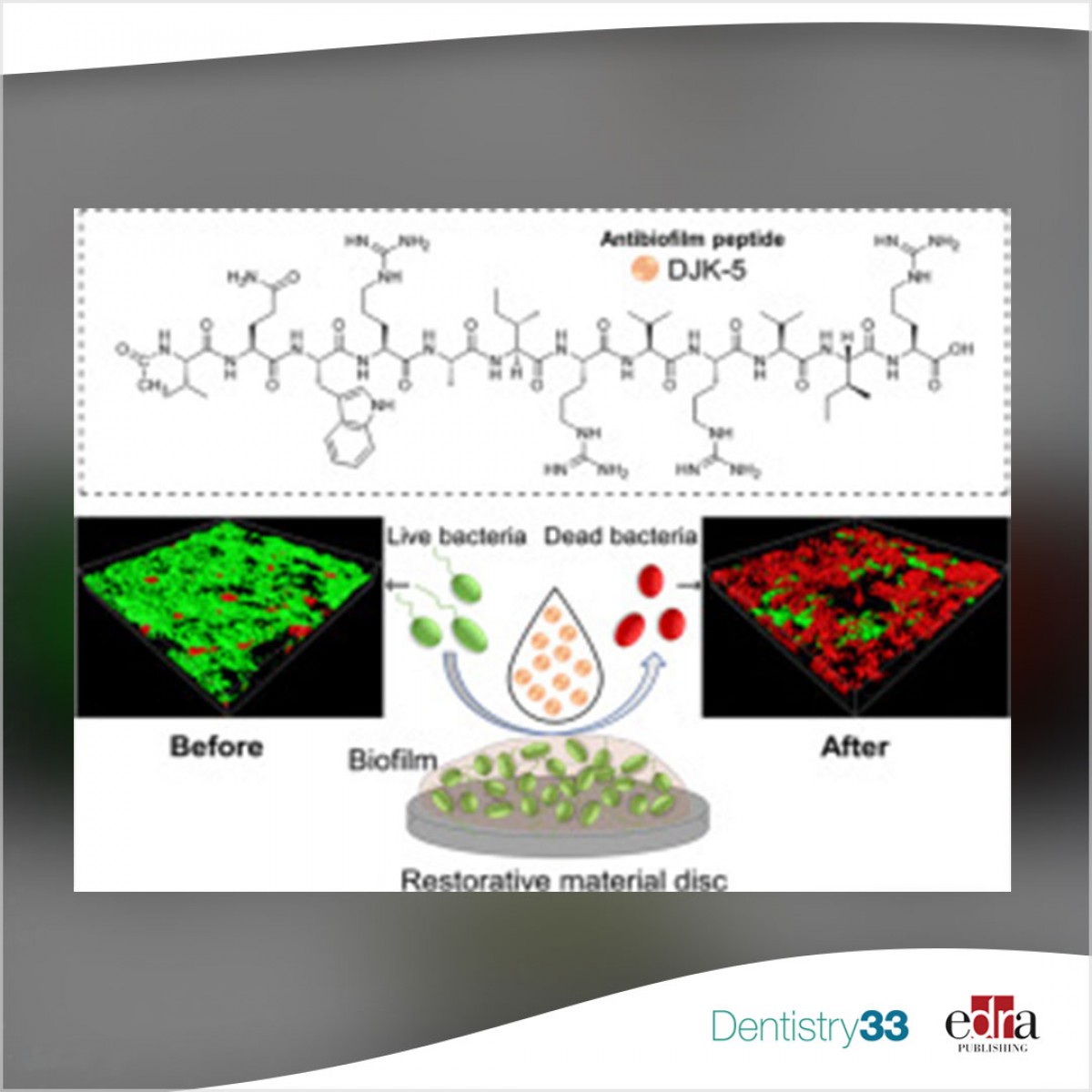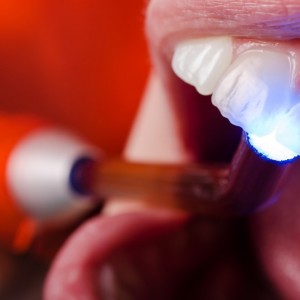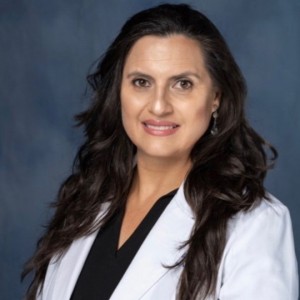
Bactericidal capacity of an innovative mouthwash based on a D-enantiomeric peptide
Lara Figini
Oral biofilms, composed of multi-species microbial communities, play a fundamental role in triggering dental diseases such as caries, pulpal and periodontal inflammation.
Apart from the tooth surface, the surface of dental restorations should also be considered an important platform for biofilm adhesion and bacterial growth. The surface roughness of restorations can influence early bacterial adhesion on composite resins, increasing the risk of oral infections, resulting in significant damage to natural teeth and supporting tissues, and increasing the need for frequent replacement of the restoration.
Therefore, in the case of patients at elevated risk of caries it is essential to effectively eliminate oral bacteria residing in biofilms on restorative materials to ensure the maintenance of a healthy oral microbiome and mitigate dysbiosis.
The "chemical control" of plaque is a valid and acceptable principle if combined with adequate "mechanical" oral hygiene obtained by brushing. Rinses with chlorhexidine have been shown to be safe and effective but should be used in the short to medium term.
Antibiofilm (antimicrobial) peptides have been suggested for the treatment of multi-species oral infections and appear to be effective against biofilms formed by both Gram-negative and Gram-positive bacteria. Specifically, the DJK-5 peptide (a D-enantiomeric cationic peptide) has recently attracted much attention for its broad-spectrum antibiofilm capability in the biomedical sector.
Materials and methods
In an in vitro study, published online in the Journal of Dentistry in May 2023, the authors evaluated the dynamic bactericidal capacity of some commercially available conventional mouthwashes in comparison with that of an innovative mouthwash based on a D-enantiomeric peptide against biofilms oral multi-species grown on different dental restorative materials.
Four composite resins (3M Supreme, 3M Supreme flow, Kerr Sonicfill and Shofu Beautifil II) and a glass ionomer cement (GC Fuji II) were used as restorative materials. Plaque biofilms were grown on the disc surfaces of various restorative materials for 1 week.
Surface roughness and biofilm attachment were evaluated by scanning electron microscopy. One-week-old biofilms grown anaerobically at 37°C were then exposed to each of the five solutions for one minute (twice a day for seven days). The mouthwashes used were Listerine Total Care, Paroex Gum with 0.12% chlorhexidine, 0.001% D-enantiomeric peptide DJK-5 mouthwash and sterile water.
The dynamics were monitored and the change in biovolume of biofilms and the percentage of dead bacteria was analyzed by laser scanning confocal microscopy.
Results
All restorative materials investigated in this study had similar surface roughness with intact biofilm attachment. The percentage of dead bacteria and the biovolume of biofilms treated by each oral rinse solution remained constant between days 1 and 7, with no statistically significant differences.
DJK-5 showed the highest percentage of bactericidal activity (up to 75.7%; vs ~20-40% for other mouthwashes) among all solutions evaluated within 7 days.
Conclusions
From the data of this study, it can be concluded that DJK-5 surpasses conventional mouthwashes in terms of bactericidal activity against oral multi-species biofilms grown on dental restorative materials.
For more information: "Dynamic killing effectiveness of mouthrinses and a D-enantiomeric peptide on oral multispecies biofilms grown on dental restorative material surfaces."
 Related articles
Related articles
Oral Hygiene & Prevention 21 April 2025
Change in diet and oral hygiene over an 8-week period: effects on oral health and oral biofilm
The aim of the study was to monitor changes in oral health and oral biofilm composition in vivo during an experiment simulating prehistoric lifestyle and diet and poor oral hygiene.
Oral Hygiene & Prevention 23 September 2023
UNC, U Penn community-based study offers dental disease insights
By UNC Adams School of Dentistry News
Their findings, reported in Nature Communications, showed that dental caries in childhood are characterized by an imbalance in the oral microbiome, and that previously unrecognized bacterial...
USA 21 September 2023 - 23 September 2023
Early Bird pricing available through July 15
This year’s "Ultimate Experience in Digital Dentistry" will be a special learning opportunity with two live procedures for participants to observe and learn from. Renowned experts Drs. Mark Ludlow...
Restorative dentistry 04 September 2023
Denture plaque, a biofilm that develops on denture surfaces, could contribute to many oral and systemic afflictions.
Despite its reputation as the most widely used restorative dental material currently, resin-based materials have acknowledged shortcomings.
 Read more
Read more
Restorative dentistry 18 November 2025
Evaluation of Two Predictors of Child Disruptive Behavior During Restorative Dental Treatment
The purpose of this study was to evaluate the effectiveness of 2 behavior rating scales (1 describing child behavior and the other describing parent behavior) in predicting child behavior during...
Editorials 18 November 2025
Her accomplishments in research, education, mentorship, and service reflect a deep commitment to excellence.
Products 18 November 2025
Students and faculty from the University of the Pacific’s Arthur A. Dugoni School of Dentistry recently demonstrated their deep commitment to community care by volunteering at two major public...
News 18 November 2025
Earned, a leading tech-enabled wealth firm purpose-built for healthcare professionals, today announced its strategic partnership with Dental & Medical Counsel, P.C. (DMC), a prominent legal firm...
News 18 November 2025
DNTL Hub, led by Dr. Devan Dalla, has invested in cutting-edge diagnostic technology, including CT scanning capabilities and TRIOS intraoral scanners. These advanced tools enable more precise...















